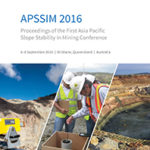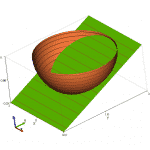The use of 3D LE methods to calculate slope stability during strong earthquake shaking
By Ian Brown & Peter Wood.
This paper discusses the application of three-dimensional (3D) limit equilibrium (LE) analysis for slope stability, with a focus on seismic considerations. While traditional 2D limit equilibrium analyses have been extensively used in civil and mining engineering, the emergence of 3D methods offers enhanced capabilities. The paper reviews the use of seismic coefficients and pseudostatic analyses to evaluate the impact of earthquakes. We discuss the theoretical foundations of limit equilibrium analyses, and introduce TSLOPE software, specifically designed for 3D LE analysis. A case study of the slope at the Waiau tank farm following the 2016 Kaikōura earthquake illustrates the practical application of 3D LE analysis. The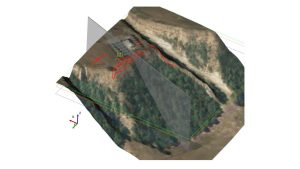 study compares results from 2D and 3D analyses. We conclude that the 3D approach yields more accurate and reliable results, particularly in slopes with constraining geometry or irregular loading. The authors advocate for the increased use of 3D methods in slope stability analyses, rather than relying on traditional 2D LE methods. Recommendations include comprehensive guidance from NZ Geotechnical Society, further research on seismic coefficients, and the compilation of local case studies for calibration. The paper concludes by highlighting the opportunity to advance seismic design practices and achieve economic slope reinforcement through the adoption of 3D LE analyses. Read more.
study compares results from 2D and 3D analyses. We conclude that the 3D approach yields more accurate and reliable results, particularly in slopes with constraining geometry or irregular loading. The authors advocate for the increased use of 3D methods in slope stability analyses, rather than relying on traditional 2D LE methods. Recommendations include comprehensive guidance from NZ Geotechnical Society, further research on seismic coefficients, and the compilation of local case studies for calibration. The paper concludes by highlighting the opportunity to advance seismic design practices and achieve economic slope reinforcement through the adoption of 3D LE analyses. Read more.
The case for using three-dimensional limit equilibrium stability analysis
By Ian Brown & Peter Wood.
At the previous Slope Stability in Mining conference, in 2021, Dr John Read claimed that there are geological and mathematical uncertainties in the method used for 3D limit equilibrium (LE) stability analyses. We acknowledge the valid issues raised by Dr Read, and our paper explains how we have developed a software 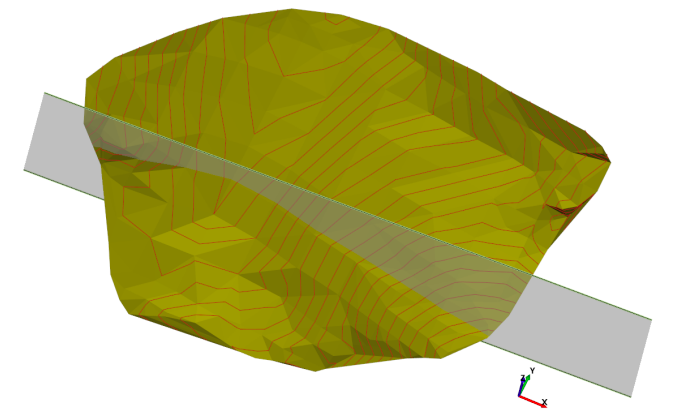 system that provides a reliable 3D LE analysis for slopes in complex geology. Our experience with developing 3D LE software (TSLOPE) began in 1989 when we were able to show that the 3D LE analysis of the stability of a proposed canyon landfill in Southern California gave a much higher Factor of Safety than that calculated for a 2D section along the axis of the canyon. We have discarded many of the methods used in 2D LE software packages as they do not achieve full force and moment equilibrium and are a relic from a time when we were limited by computational ability. Our paper discusses the background and underlying theory supporting our 3D LE software and provides comparisons of 3D and 2D analyses carried out using the same geological model. Read more.
system that provides a reliable 3D LE analysis for slopes in complex geology. Our experience with developing 3D LE software (TSLOPE) began in 1989 when we were able to show that the 3D LE analysis of the stability of a proposed canyon landfill in Southern California gave a much higher Factor of Safety than that calculated for a 2D section along the axis of the canyon. We have discarded many of the methods used in 2D LE software packages as they do not achieve full force and moment equilibrium and are a relic from a time when we were limited by computational ability. Our paper discusses the background and underlying theory supporting our 3D LE software and provides comparisons of 3D and 2D analyses carried out using the same geological model. Read more.
Slope stability analysis and the new (New Zealand) National Seismic Hazard Model
By Ian Brown.
For many sites in New Zealand, the recently announced National Seismic Hazard Model (NSHM) 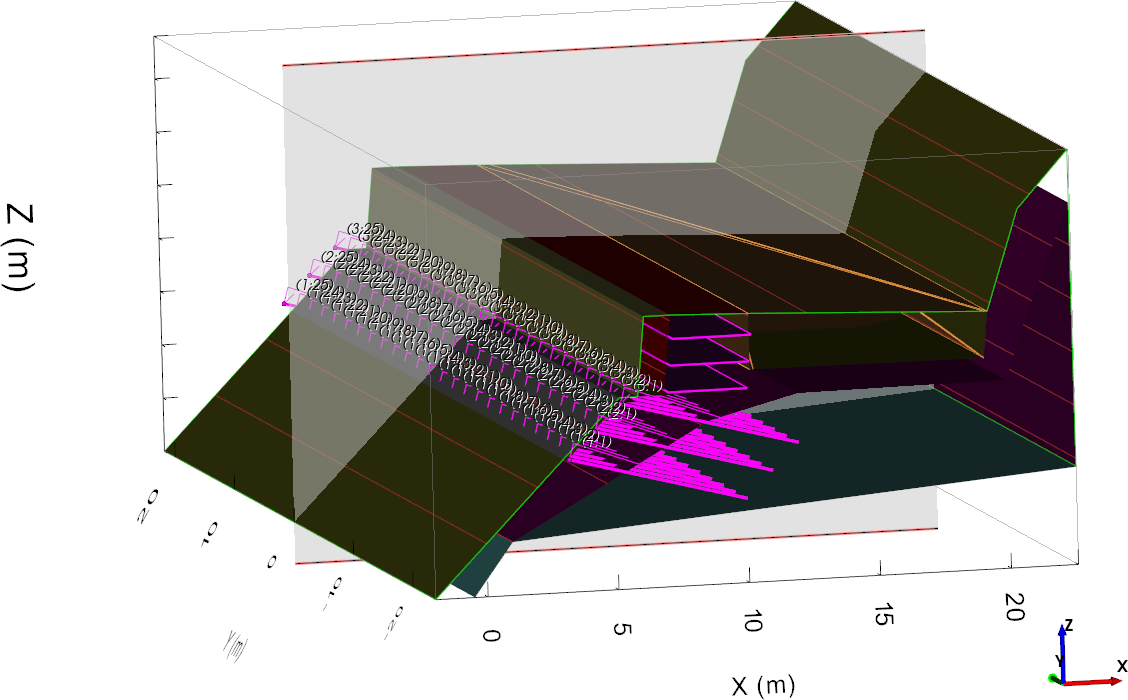 has indicated levels of shaking that will make it difficult, in some cases, to establish site stability when calculated in a conventional 2D limit equilibrium slope stability analysis. We provide an example that shows when 3D effects are taken into account, the out of plane (third dimension) resisting forces provide sufficient additional restraint that indicates stability of the 3D volume of soil. Read more.
has indicated levels of shaking that will make it difficult, in some cases, to establish site stability when calculated in a conventional 2D limit equilibrium slope stability analysis. We provide an example that shows when 3D effects are taken into account, the out of plane (third dimension) resisting forces provide sufficient additional restraint that indicates stability of the 3D volume of soil. Read more.
Development of 3D models of slope failure during Canterbury earthquake sequence
By C J Skinner, I R Brown.
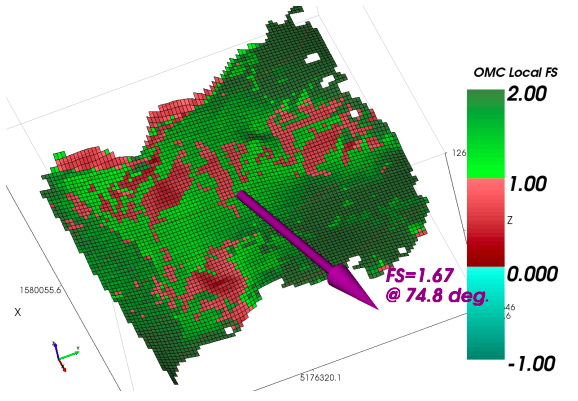 Christchurch City and its surrounds experienced a series of damaging earthquakes in 2010 and 2011. During the 22 February 2011 earthquake, extensive cracking and movement of the ground occurred in some areas of the Port Hills. We have used a geological modelling package, Leapfrog3D®, to build 3D models of three of the well documented landslide areas. The surfaces that were developed in Leapfrog3D® have been used in TSLOPE, a new slope stability package, to investigate the 3D effects on slope stability. An objective of our study was to develop a number of slope models that could be used to calibrate computational methods used to predict seismic displacements, and to make these available to other researchers. Read More
Christchurch City and its surrounds experienced a series of damaging earthquakes in 2010 and 2011. During the 22 February 2011 earthquake, extensive cracking and movement of the ground occurred in some areas of the Port Hills. We have used a geological modelling package, Leapfrog3D®, to build 3D models of three of the well documented landslide areas. The surfaces that were developed in Leapfrog3D® have been used in TSLOPE, a new slope stability package, to investigate the 3D effects on slope stability. An objective of our study was to develop a number of slope models that could be used to calibrate computational methods used to predict seismic displacements, and to make these available to other researchers. Read More
TSLOPE – how to analyse a slope for noncritical slip surfaces
By Ian Brown.
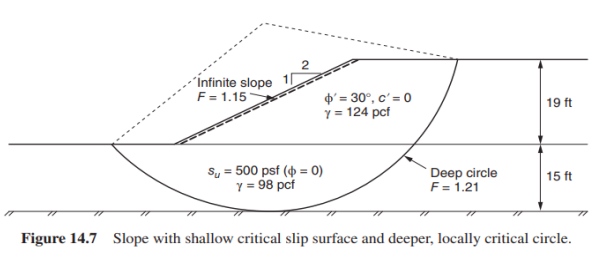 TSLOPE is a 2D and 3D limit equilibrium analysis program used for slope stability analysis. This example of the use of TSLOPE shows how we can locate critical slip surfaces using a search methodology, and show the difference in 2D and 3D analysis of the same slope. The example is from Chapter 14 Important Details of Stability Analyses, of Duncan et al. 2014.1 Read More
TSLOPE is a 2D and 3D limit equilibrium analysis program used for slope stability analysis. This example of the use of TSLOPE shows how we can locate critical slip surfaces using a search methodology, and show the difference in 2D and 3D analysis of the same slope. The example is from Chapter 14 Important Details of Stability Analyses, of Duncan et al. 2014.1 Read More
Estimation of in situ strength from back-analysis of pit slope failure
By Ian Brown, Peter Wood & Mark Elmouttie
Using a software package that can be used for either three or two-dimensional (2D) slope stability analyses
of the same model we analyse the stability of columns (3D) or slices (2D) overlying a shear failure surface. The failure surface can be any shape, such as that formed by interconnecting fault surfaces in an open pit slope failure that we analyse. We show that there is a significant difference in the factors of safety calculated using 3D analyses, compared with 2D sections through the same model. This means that different shear strength parameters will apply when the values are varied to obtain a Factor of Safety of 1.0.
Systematic back-calculations of open pit slope failures using appropriate 3D analysis methods can give a better understanding of appropriate shear strengths to use in forward 3D analyses. This should lead to more efficient pit slope designs. Read More
3D terrain and geological modelling for the design of a cut slope in Wellington, NZ
By Matt Brown
A 3D terrain and geological model has been used to assist in the design of a cut slope for a proposed house in Wadestown, Wellington. The natural slope of the site is ~30º and consists of colluvium overlying fractured greywacke. A 3D geological model was built from site investigation data, a topographical
survey, and from point cloud data generated via photogrammetry (utilising photographs obtained by a UAV). The 3D model was analysed using TSLOPE; a 3D limit equilibrium slope stability package. This enabled calculation of the appropriate parameters for design of slope reinforcement. Read More
On the Limitations of Limit Equilibrium Slope Stability Analyses
By Robert Pyke Ph.D., G.E.
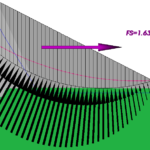 The history of slope stability analyses by the method of slices or columns in geotechnical engineering is well documented in the textbook by Duncan, Wright and Brandon (2014) and elsewhere. The procedures used for slope stability analysis started out as hand or graphical methods, but with the introduction of limit equilibrium methods of analysis most calculations became computerized. Many engineers seem to believe that these computer programs automatically give the correct answer, but, in addition to the “garbage in – garbage out” rule still holding, these analyses are simplified and thus approximate at best. Read More
The history of slope stability analyses by the method of slices or columns in geotechnical engineering is well documented in the textbook by Duncan, Wright and Brandon (2014) and elsewhere. The procedures used for slope stability analysis started out as hand or graphical methods, but with the introduction of limit equilibrium methods of analysis most calculations became computerized. Many engineers seem to believe that these computer programs automatically give the correct answer, but, in addition to the “garbage in – garbage out” rule still holding, these analyses are simplified and thus approximate at best. Read More
3D Effects in Slope Stability Analyses
By Robert Pyke Ph.D., G.E.
The short answer to the question “what is the difference between 2D and 3D analyses of slope stability by the Method of Slices” is that it can be significant and varies in surprising ways. The examples below illustrate some of the differences, but these are just the tip of the iceberg. Read More
Selection of seismic coefficients for use in pseudo-static slope stability analyses
By Robert Pyke Ph.D., G.E.
 Analyses of seismic slope stability problems using limit equilibrium methods in which the inertia forces due to earthquake shaking are represented by a constant horizontal force (equal to the weight of the potential sliding mass multiplied by a coefficient) are commonly referred to as pseudo-static analyses. Read More
Analyses of seismic slope stability problems using limit equilibrium methods in which the inertia forces due to earthquake shaking are represented by a constant horizontal force (equal to the weight of the potential sliding mass multiplied by a coefficient) are commonly referred to as pseudo-static analyses. Read More

